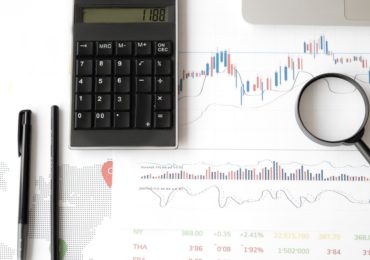
Have the recent price swings in the stock market spooked you? If so, it may be time to compare your portfolio against a bear market checklist.
With the Standard & Poor’s 500 stock index down from all-time highs, a portfolio gut check is especially in order if you didn’t do one in January. Whether we’re facing a well-needed short-term correction or the beginning of a more serious retreat, investors need to review their investments plans.
While no one is calling for stocks to fall 20 percent – the classic bear market definition – they do happen. Here’s how to create a bear market checklist to make sure your portfolio can ride out any market turmoil.
Check Your Investment Time Horizon
All investing starts with a reason to invest, so revisit the reason why you’re investing, says Marc Horner, a certified financial planner, wealth advisor and president of Fairhaven Wealth Management in Oak Brook, Illinois. “It all comes back to an individual’s financial plan; what their particular goals are,” Horner says. “Those goals are all going to have different time horizons.”
Goals such as buying a house or paying for a child’s college education have a shorter time horizon than saving for retirement. For investors who will need a certain amount of money over the next three to five years, “this might be a pretty good time to be thinking about taking some of that money, if it is invested, off the table,” Horner says.
Rebalance
Andy Schuler, senior vice president and wealth management investment director at PNC Wealth Management in Cleveland, says once an investor has reconfirmed his or her investment objectives, it may be necessary to rebalance those investments back to the original strategy.
Given last year’s rally, it’s very likely most equity-dominant portfolios need some pruning. For example, if an investor’s original U.S. stock position was 25 percent and it’s now 30 percent, this would be the time to sell some of those positions and buy something with those profits that underperformed to get the balance right. “Rebalancing really is just the classic ‘buy low, sell high,’” she says.
While you’re rebalancing, ensure that your portfolio is diversified. Owning different asset classes helps reduce the correlation between your holdings. “That’s very important because you don’t want them all performing the same way at the same time.
Consider the role cash plays in your portfolio, Schuler says. It can be a buffer during rockier periods that investors can tap rather than sell investments, and during market corrections, having cash on hand enables you to take advantage of buying opportunities. Market corrections often bring down all stocks, including those with excellent fundamentals. “You may be able to have the opportunity to actually upgrade your portfolio as a result,” he says.
Review Your Risk Tolerance
Many investors don’t understand their risk tolerance. There’s some kind of weird pride in saying I have a high risk tolerance. A lot of people say that, but “then they panic and sell out when the market is lower. There’s no badge of honor in saying you have a high risk tolerance.”
Schuler says there are two parts to risk tolerance. The first is how much market volatility a person can handle. The second is how much risk does a person need to take to achieve his or her goal. Horner and Schuler say there’s no need to take on unnecessary risk. It just needs to be placed in context with a person’s goals. “If you take a lot of risk in your portfolio, is that going to generate the return you need, or is capital preservation really more of what you need to do,” she says.
Investors should include factors such as income, any capital preservation needs and risk tolerance to see where they all fit together when constructing a portfolio, she says.
Have an Exit Strategy
Investors may spend their whole lives saving for retirement but never spend any time thinking about the best way to live on those savings. That’s where a withdrawal strategy comes in, and it should account for something known as sequence-of-returns risk, which is how the timing of those withdrawals can affect your portfolio adversely.
For example, someone who retired in 2007 or 2008 and didn’t have a portfolio withdrawal strategy may have had to sell some holdings at the worst possible time to support themselves. If this person took money from stock accounts, those losses were locked in, and the rest of the portfolio holdings had to work much harder just to get back to even. A lot of those people, unfortunately, had to go back to work” because of how they withdrew money.
Remember, Bear Markets Don’t Last
At some point the markets will have a more meaningful correction, which is a natural part of the investment process, Horner says. But investors should put this in context, as the stock market has made money 95 percent of the time over rolling 10-year periods since 1926, he says. And for rolling 20-year periods, it’s made money 100 percent of the time. “Bear markets are painful, and they’re not pleasant,” he says. “I don’t want to diminish that. But the sun will rise tomorrow.”







